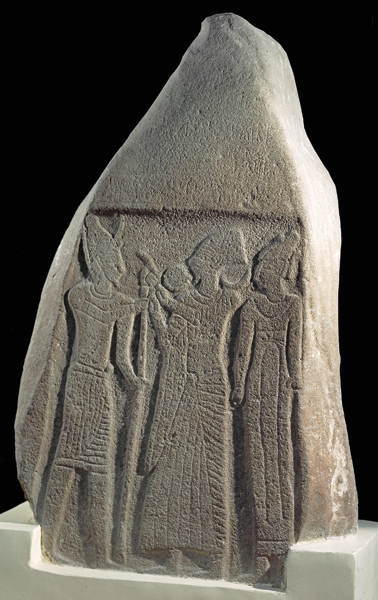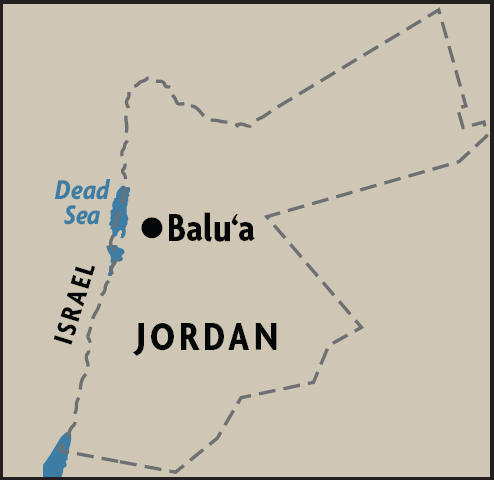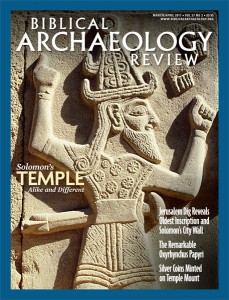
This roughly shaped, 5-foot-tall black basalt stela from the Late Bronze Age (1550–1200 B.C.E.) was discovered at Balu‘a in central Jordan. Carefully etched into the stela are three figures in distinctively Egyptian style. The central figure, cloaked in a patterned full-length gown and wearing a bag-shaped headdress, is likely a local king or chieftain of Moab. He is being presented on the left with a scepter held by a god who wears a simplified form of the double crown of Upper and Lower Egypt. Looking on behind the king is a female figure dressed in a sleek, fitted gown and wearing the plumed atef crown typical of the Egyptian god Osiris. Above the scene are the faint and now largely illegible traces of a four-to-six-line inscription that remains undeciphered.
Although the tribes of Moab were largely beyond the reach of Egypt’s New Kingdom empire, this stela shows that these groups were still well acquainted with symbols of Egyptian power. Mimicking Egyptian royal iconography, the stela appears to show a male god, possibly the Canaanite god Baal, investing the Moabite chief with divine authority to rule. The female figure probably represents the Canaanite goddess Anat.

Already a library member? Log in here.
Institution user? Log in with your IP address.

